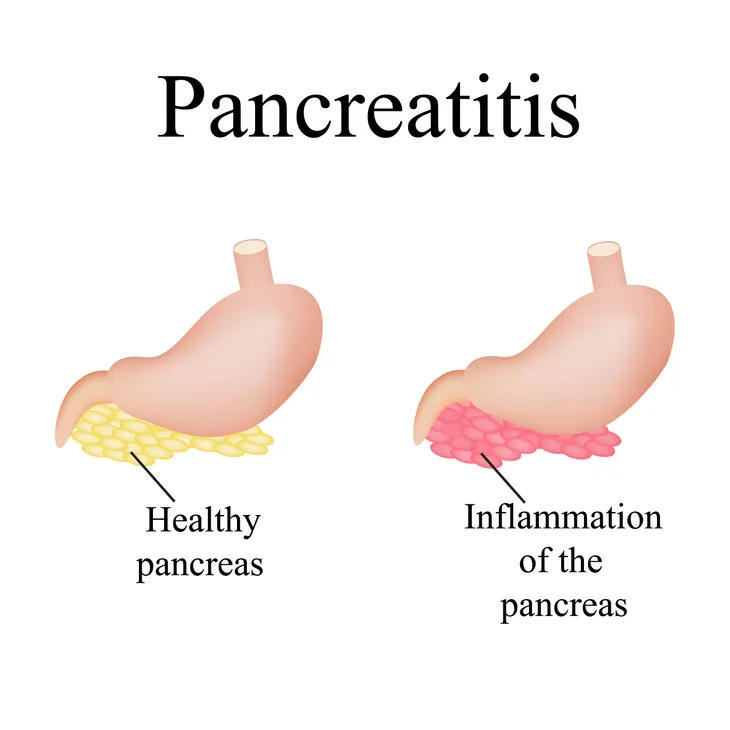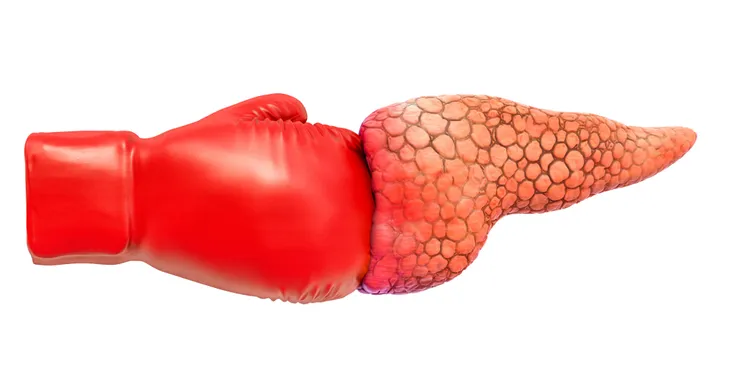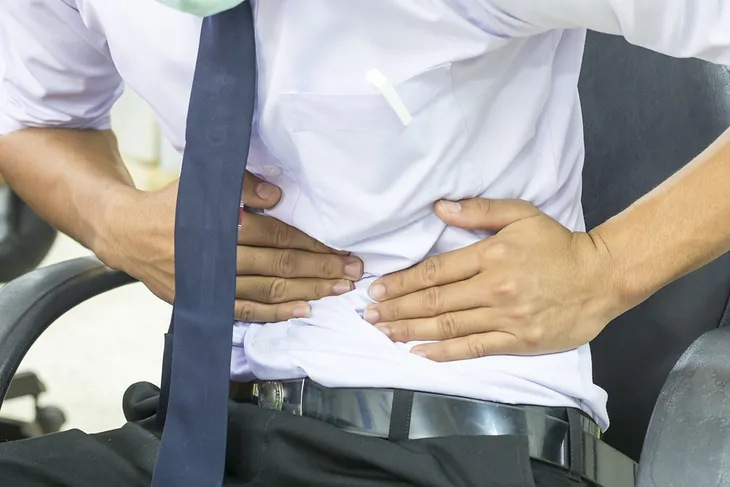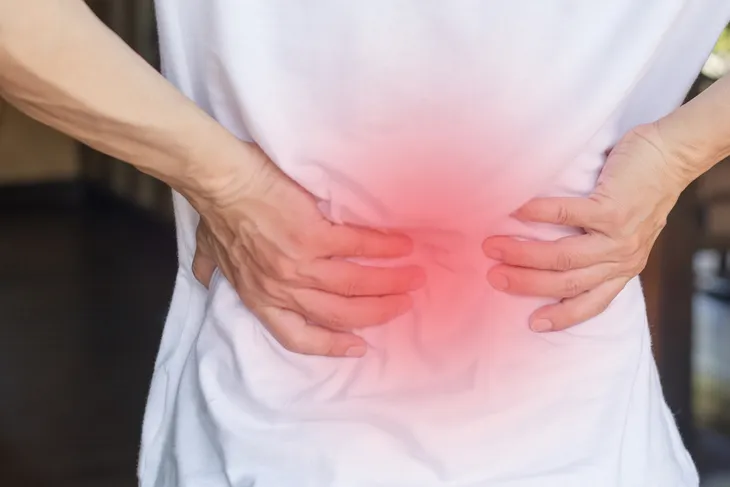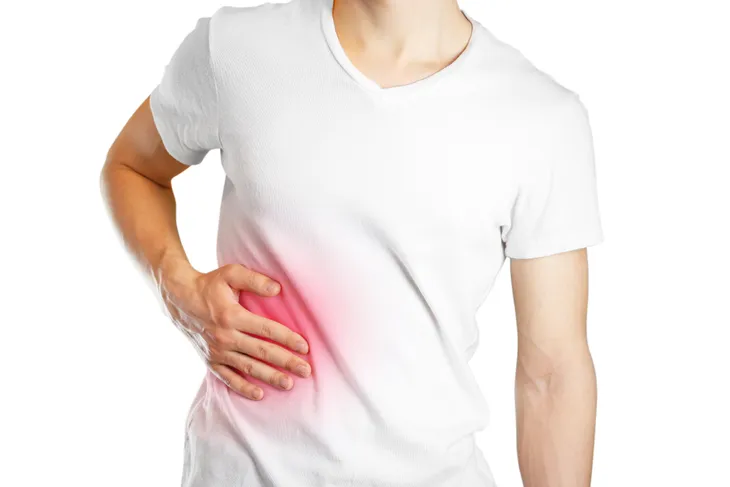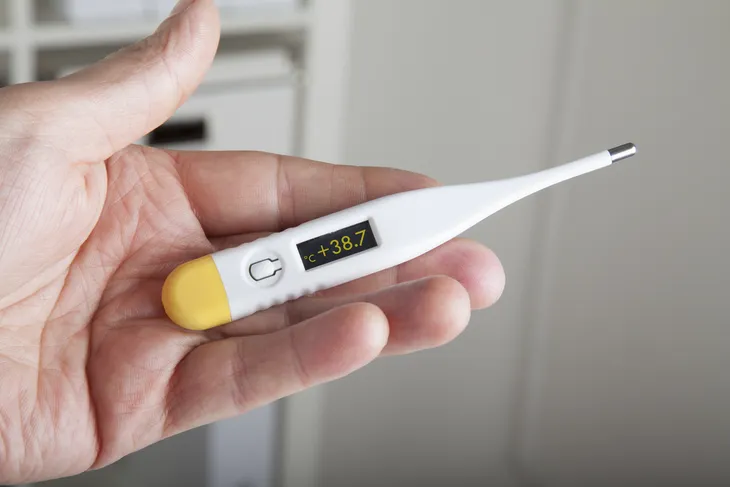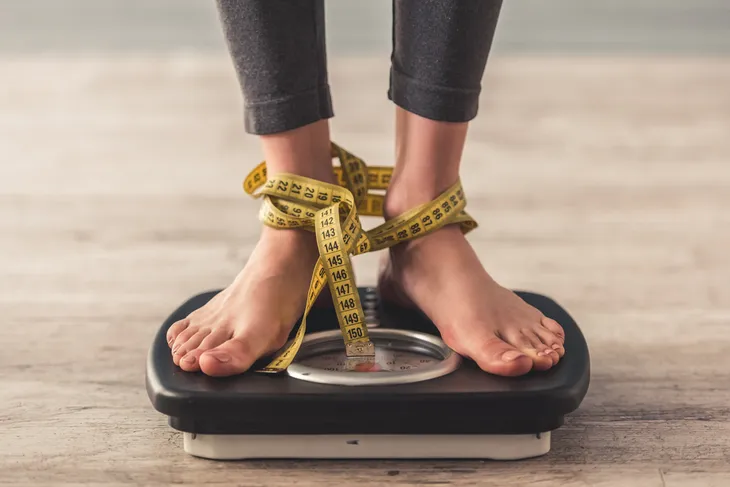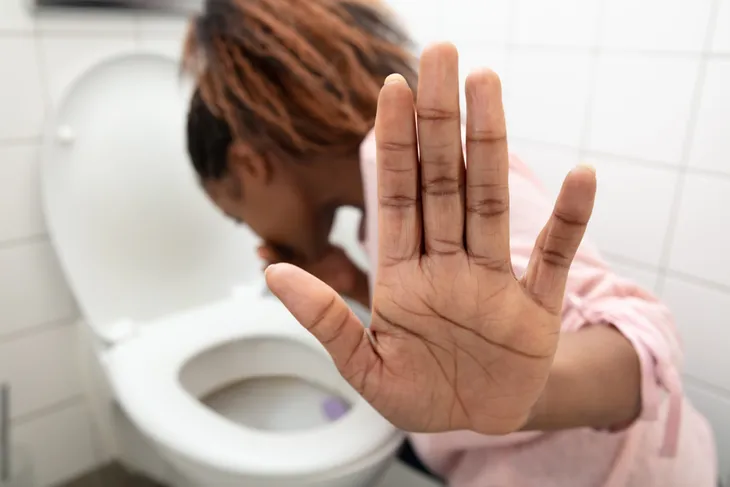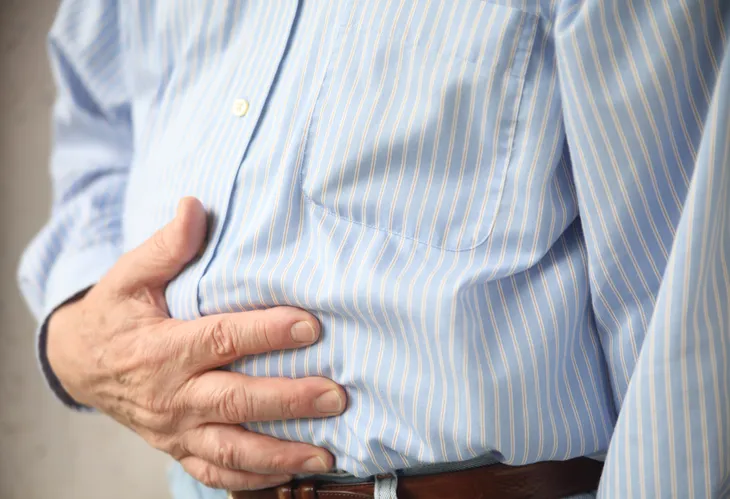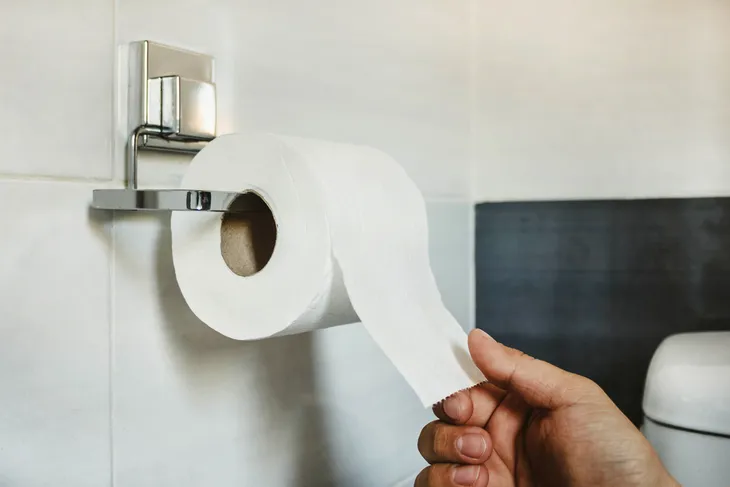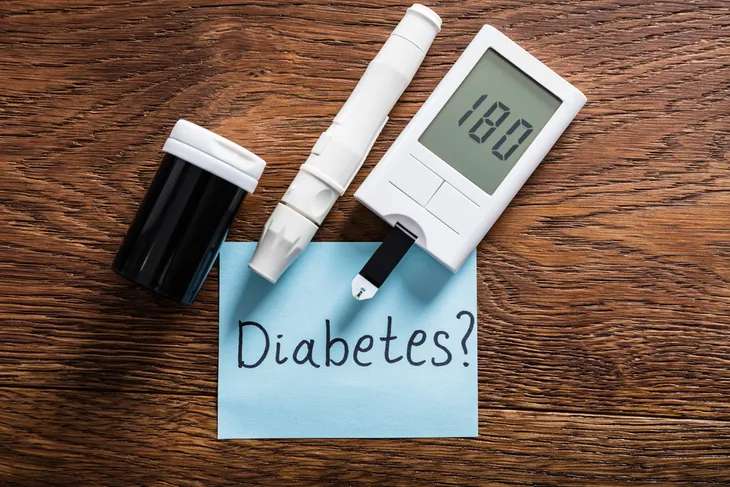Before we dive into all the warning signs of pancreatitis, let’s first explain what it is. Healthline states that pancreatitis is a condition that develops due to “pathologic” inflammation of the pancreas.
Our pancreas is located just behind the stomach and its job is to release enzymes to help us digest our food and regulate how our body manages glucose. Pancreatitis can come and go on its own, but it can also be a chronic problem with lots of painful and uncomfortable symptoms. Here are 20 signs of pancreatitis!
Acute Pancreatitis
It’s important to note that there are two different kinds of pancreatitis: acute and chronic. Acute pancreatitis often comes on suddenly and clears up within a few days. The National Institute of Diabetes and Digestive and Kidney Diseases (NIDDK) says 210,000 American adults develop acute pancreatitis each year and that gallstones are typically the most common cause.
Chronic Pancreatitis
Chronic pancreatitis is the second form of pancreatitis. This type of pancreatitis also indicates inflammation of the pancreas but tends to occur for long periods of time causing permanent damage to the pancreas. It’s often caused by alcoholism, as well as autoimmune and genetic diseases.
Upper Abdominal Pain
The main symptom of pancreatitis (both acute and chronic) is pain in the upper abdomen. This pain could also spread depending on the severity of the disease. According to NIDDK, the abdominal pain in acute and chronic pancreatitis is felt differently.
Pain Spreads To Back
When it comes to acute pancreatitis, the pain begins in the upper abdomen and then sometimes spreads into the back. It can be mild or severe, and may last for several days, says the National Institutes of Health (NIH). With chronic pancreatitis, the pain also begins in the upper abdomen, but some patients report not feeling any pain at all.
Pain Worsens After Eating
As we just mentioned, pain in the upper abdomen, right beneath the ribs, is most common in pancreatitis. This pain can be mild at first but will become worse after eating and drinking, says Everyday Health.
Pain Worsens When Lying Down
Everyday Health also states that the pain tends to get worse when “lying down on the back and lessen while leaning forward in a sitting position.” Also, this pain begins to travel and radiate to the back but is not aggravated by movement. The pain can also differ depending on what is causing the pancreatitis, explains Everyday Health.
Abdominal Tenderness
Patients with pancreatitis often experience abdominal tenderness and sensitivity to touch. Abdominal swelling and pain are symptoms that often go hand-in-hand with abdominal tenderness.
Fever
Among the most common symptoms of acute pancreatitis, both the Mayo Clinic and WebMD list fever. Dr. Axe also notes that the body might begin to feel weak as it tries to battle against the inflammation. Also, a patient might experience difficulty breathing and shock.
Chills
Alongside fever, chills and flu-like symptoms may also occur. Chills are typically caused by an obstruction of the bile ducts in the pancreas and are a result of digestive disruption.
Elevated Heart Rate
Those with pancreatitis may also experience an increase in their heart rate (pulse). This rapid heart could reach anywhere from 100 to 140 beats per minute. This symptom often comes alongside flu-like symptoms, such as fever, chills, and excessive sweating.
Weight Loss
Weight loss is more common in chronic pancreatitis and according to Very Well Health, and it can happen even when the person with this condition is eating normally. Even though we’d all probably enjoy losing a few pounds here and there without trying, weight loss without any logical explanation is often a huge red flag.
Weight loss occurs in those with pancreatitis is because the pancreas is not functioning properly. “This occurs because the body does not secrete enough pancreatic enzymes to break down food, so nutrients are not absorbed normally,” writes the source. “Poor digestion leads to loss of fat, protein, and sugar into the stool,” adds the source.
Nausea
When it comes to problems with the pancreas, pancreatitis is the most common condition to cause nausea and vomiting. This symptom tends to happen more often with fatty foods because the pancreas is having trouble producing enzymes that are supposed to help the digestive system break down fat.
Certain foods are more likely to make you feel nauseated, writes Prevention after talking with Andrew Hendifar, MD, Codirector of Pancreas Oncology at Cedars-Sinai Medical Center in Los Angeles. “Hamburgers are often nausea triggers, and so are avocados and nuts, which are all high in fat,” says Hendifar. He adds, “Pizza is another one that’s really tough for patients with a compromised pancreas.”
Vomiting
In addition to nausea, vomiting is another unfortunate symptom of pancreatitis. When it comes to treatment, “Sometimes a patient cannot control vomiting and needs to have a tube through the nose to the stomach to remove fluid and air,” writes Very Well Health when talking about acute pancreatitis. “In mild cases, the patient may not have food for three or four days but is given fluids and pain relievers by vein,” adds the source.
Indigestion
It’s common for those with pancreatitis to struggle with stomach issues including diarrhea, bloating, and indigestion. Indigestion, formally known as dyspepsia, often manifests itself as pain or burning in the upper abdomen.
Bloating
While pain in the abdomen is the most common sign of pancreatitis, a patient can also experience bloating with a swollen or distended abdomen, says Healthline.
Oily, Smelly Stools
This one sounds strange, we know, and it kind of is, but it’s true. Healthline explains this symptom is known as steatorrhea, which is fatty stools that have a strange odor. “Steatorrhea can be a sign of malabsorption. This means you’re not getting all of your essential nutrients from your diet because your pancreas doesn’t produce and secrete enough digestive enzymes to break down your food,” writes the source.
In addition to the strange smell, your stools might appear oily. “The toilet water will have a film that looks like oil,” says Andrew Hendifar, MD, to Prevention. “The oil is all the dietary fat that the pancreas wasn’t able to break down,” he adds.
Diarrhea
After pain in the abdomen and back, diarrhea is another symptom of chronic pancreatitis, and the NIDDK notes that people with chronic pancreatitis might not have any symptoms until their symptoms become complications.
At-Risk for Developing Diabetes
Since the pancreas is responsible for producing hormones that help control our body’s regulation of glucose in the blood, it also affects our blood sugar levels. When the pancreas isn’t working properly, it can put a person at risk for diabetes.
Dr. Axe explains that chronic pancreatitis is typically responsible for this symptom, or rather side effects. “With chronic pancreatitis, there is physical scarring of the pancreas that can put you at a greater risk for developing diabetes, digestive disorders, and even pancreatic cancer,” says the source.
Shortness of Breath
We’ve talked about how there are two types of pancreatitis (acute and chronic), but the U.S. Department of Health and Human Services also lists a number of symptoms that could indicate a person is suffering from severe pancreatitis. If this is the case, you should seek medical attention right away. One of these symptoms is shortness of breath.
Jaundice
Jaundice is a condition that causes yellowing of the skin and eyes. Jaundice is typically considered one of the more severe symptoms of pancreatitis. If you notice this yellowing effect, it’s important to seek guidance from your doctor.

